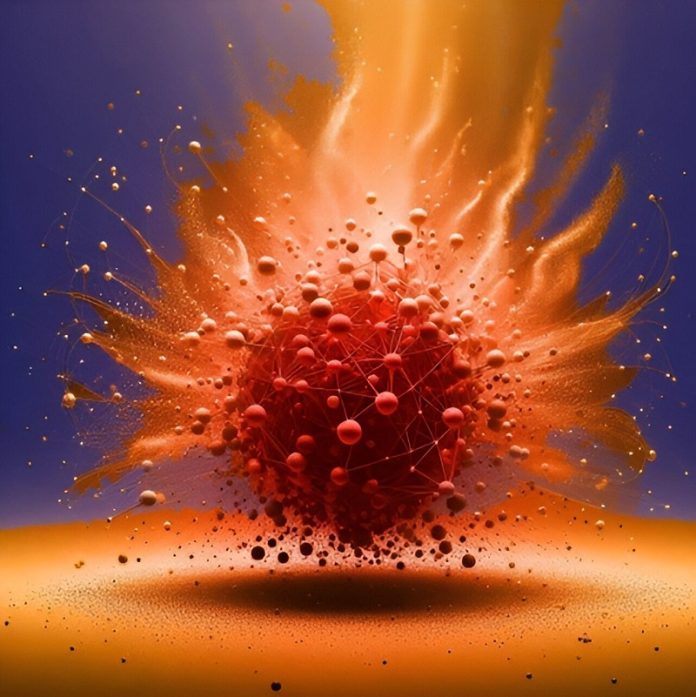
The early universe was a scorching 250,000 times hotter than the core of our sun.
At such extreme temperatures, it was impossible for protons and neutrons—the building blocks of matter—to form.
To understand how matter came into existence, scientists recreate these intense conditions using particle accelerators, which smash atoms together at nearly the speed of light.
By measuring the particles produced in these collisions, scientists can piece together the story of how matter was formed.
The particles they observe can originate from the original hot soup of quarks and gluons or from reactions that occurred later.
These later reactions started just 0.000001 seconds after the Big Bang, when composite particles made of quarks began interacting with each other.
Recent calculations have revealed that up to 70% of some measured particles come from these later reactions, rather than from the early universe’s initial conditions.
This groundbreaking research was published in the journal Physics Letters B.
This discovery enhances our understanding of how matter formed in the universe.
It helps scientists determine what portion of the matter around us originated in the first fractions of a second after the Big Bang and what portion formed from later reactions as the universe expanded.
The results suggest that a significant amount of matter formed later than previously thought. To accurately interpret collider experiment results, scientists need to separate particles formed in later reactions from those formed in the initial subatomic soup.
In the 1990s, physicists discovered that certain particles, such as D mesons, form in large numbers from later reactions. These D mesons can combine to create a rare particle called charmonium. However, measuring charmonium is challenging due to its rarity, leading to debate about the significance of this effect.
Recent experiments provided new data on the production of charmonium and D mesons in colliders. Physicists from Yale University and Duke University used this data to calculate the effect’s strength, finding it to be much greater than expected.
They concluded that over 70% of measured charmonium could result from these reactions.
As the hot soup of subatomic particles cools, it expands rapidly in a fireball. This process occurs in less than one hundredth of the time it takes for light to cross an atom, making it difficult for scientists to fully understand the expansion.
The new calculations show that despite the rapid expansion, a significant amount of charmonium is produced. This finding brings scientists closer to comprehending the origins of matter.
In summary, these new insights reveal that much of the matter around us formed later than we previously believed.
This research helps scientists distinguish between particles formed during the early universe and those formed later, moving us a step closer to unlocking the secrets of the universe’s beginnings.



